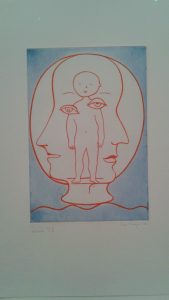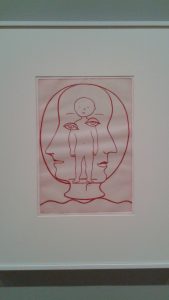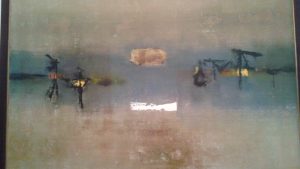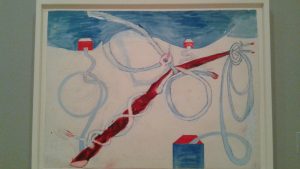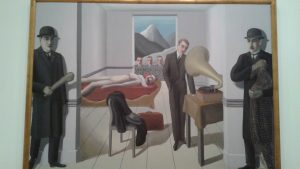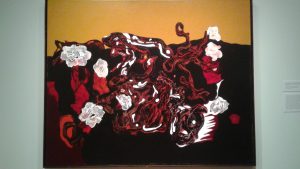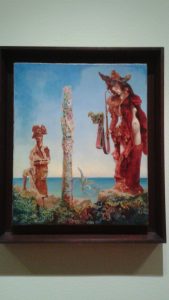Louise Bourgeois, Self Portrait, 1990, drypoint, etching, and aquatint
The usage of line here makes the image very flat, however, the two sides of the heads and the curvy, wiggly line almost seem to suggest movement, contrary to the figure in the center facing directly at the viewer.
László Moholy-Nagy, Constructions, Kestner Portfolio 6, 1923 (Portfolio of six lithographs)
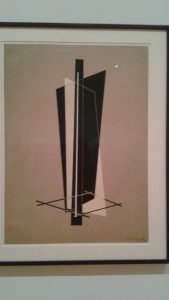
This lithograph is like a contradicting mixture of line elements and two-point perspective. Because of the flat images it contains, there’s an initial idea of it being 2D, but in reality, the intersecting shapes and different views of those shapes creates an image that is 3D and has more than one perspective.
Charles White, Black Pope (Sandwich Board Man) 1973, Oil wash on Board

The usage of White’s value here creates an incredible sense of depth and the overlapping shapes of the figure, the centerpiece and the frame within the painting adds to this effect.
Vasudeo S. Gaitonde, Painting 4, 1962, Oil on Canvas
This painting uses a multitude of colors mostly with a red, blue and yellow hue to create a murky tone, and then highlights the parts of the painting they want to stand out by using a darkish blue (?) and strikingly, vivid oranges and yellows.
Louise Bourgeois, Topiary, 1997, Watercolor, ink, oil, charcoal and pencil on paper
The red shapes placed on top of the white space and situated on the blue space gives the image a sense of depth and perspective as the tubes connected to it come forward to the larger red tube and into the blue container in the front of the image.
Max Ernst, Sun and Forest, 1931, Cut-and-pasted cardboard with oil, gouache, and pencil on paperboard
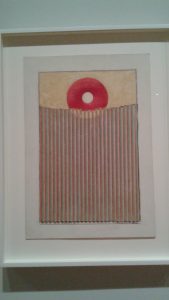
The intersection of shapes with the use of color (the intersection is indicated from the sun’s redness to a beige color) give the viewer an idea that the brown, vertical textured shape is in front of the sun.
René François Ghislain Magritte, The Menaced Assassin, 1927, Oil on canvas
The usage of color and the way objects and figures are situated in the painting with the contrasts of shadows give the image an intense depth. It looked as if the painting led to another room as I looked into it.
Max Ernst, To the Rendezvous of Friends (The Friends Become Flowers, Snakes, and Frogs) 1928, Oil on Canvas
The yellow background contrast to the reds, whites and darker foreground give the center shapes a spot in the space of the painting. It is insinuated that the shapes are closer to the view because of the yellow background.
Max Ernst, Napoleon in the Wilderness, 1941, Oil on Canvas
The red figures situated in the front are strongly contrasted by the blue background, giving the viewer an idea that these figures are closer.
